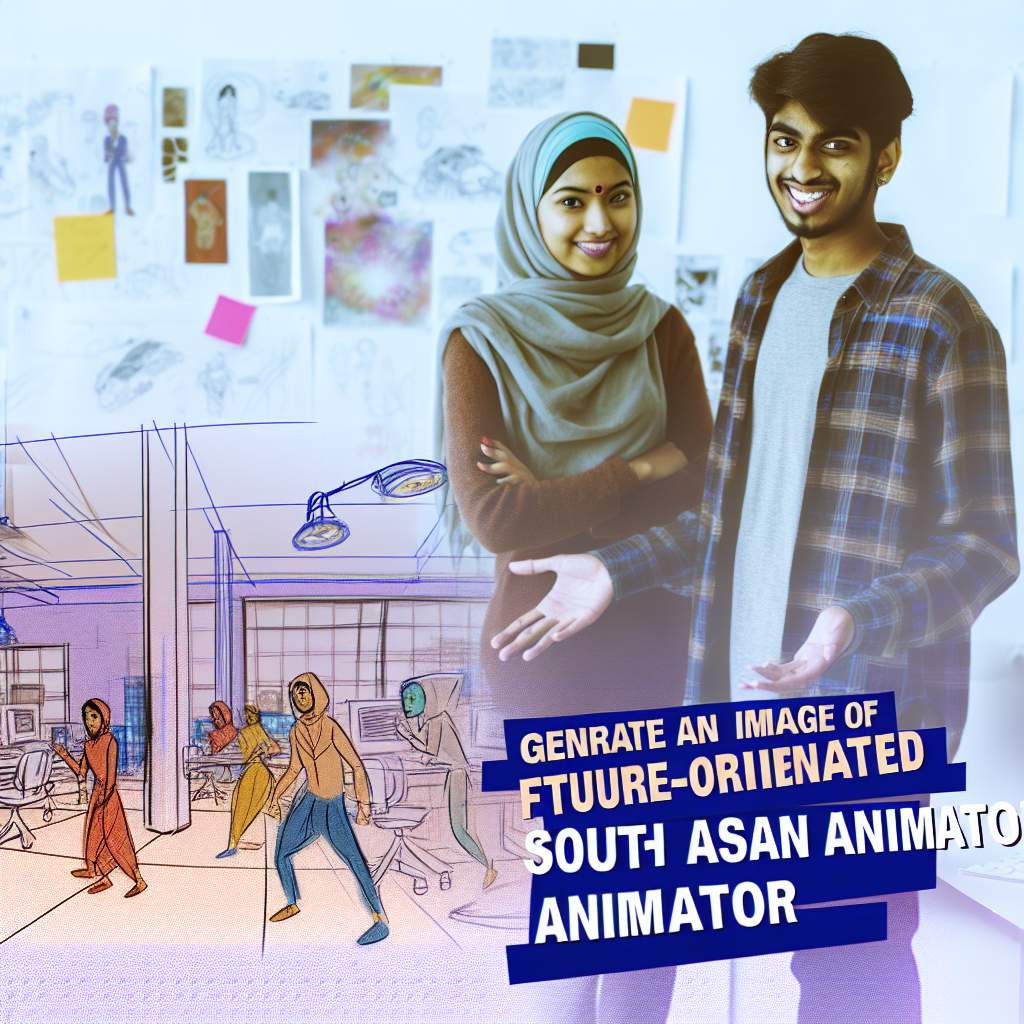Overview of New Zealand’s Entertainment Industry
Current Landscape of the Industry
New Zealand’s entertainment industry has grown significantly over the past decade.
It includes a diverse mix of film, television, music, and live performances.
Notably, global hits such as those from Weta Digital have put the country on the map.
Moreover, local studios like Silver Fern Animation have been gaining international attention.
The industry’s growth contributes substantially to New Zealand’s economy.
It also creates numerous job opportunities across creative and technical fields.
The Rise of Animation in New Zealand
Animation has become a fast-growing segment within the entertainment sector.
Many talented animators and studios drive this rise with innovative projects.
For example, Kiwi Frame Studios recently produced a hit animated series for children.
This increase reflects a global demand for high-quality animated content.
Animation offers unique storytelling possibilities that live-action cannot always achieve.
Consequently, studios invest heavily in animation technology and training programs.
Key Players and Contributions
Several companies have become influential pioneers in New Zealand’s animation scene.
Animation Vision NZ collaborates with international partners to expand their reach.
Creative director Emma Clarke leads groundbreaking projects that blend culture and technology.
Personalized Career Consulting
Unlock your potential with expert career advice tailored to your goals. Get personalized guidance and actionable steps toward your dream career in New Zealand.
Get StartedIn addition, government initiatives support the growth of local talent and studios.
These efforts help position New Zealand as a competitive player in the global entertainment market.
Emerging Trends and Future Opportunities in Animation
The future of animation in New Zealand looks promising and full of potential.
Technological advances like virtual reality open new creative avenues for animators.
Besides, partnerships with global streaming platforms expand audience access worldwide.
Local education programs now emphasize animation skills to prepare future professionals.
Therefore, the animation sector is set to become a key driver of New Zealand’s entertainment economy.
Key Skills and Technologies Animators in New Zealand Are Utilizing to Innovate
Creative and Technical Skill Sets
Animators in New Zealand combine artistic creativity with technical expertise.
They master character design to craft compelling and relatable personalities.
Storytelling is essential to engage diverse audiences effectively.
These professionals use advanced drawing and modeling skills to build immersive worlds.
Knowledge of anatomy and motion helps create realistic animations.
They constantly refine their abilities in lighting and texture techniques.
Effective communication skills enable animators to collaborate with multidisciplinary teams.
Transform Your Career with a Professional CV and Cover Letter
Stand out to employers with an ATS-optimized resume and tailored cover letter designed to match your dream role. Let us craft your job application materials for success!
Get StartedAdoption of Cutting-Edge Animation Software
New Zealand animators leverage powerful software like Autodesk Maya to design 3D models.
They also use Blender for flexible and open-source animation solutions.
SideFX Houdini provides procedural modeling and visual effects capabilities.
Adobe After Effects plays a crucial role in post-production and compositing tasks.
Animators embrace Unity and Unreal Engine to create interactive and real-time experiences.
Software proficiency allows them to speed up production workflows efficiently.
Emerging Technologies Driving Innovation
Virtual reality is transforming how stories are experienced in New Zealand’s film sector.
Augmented reality offers new opportunities for immersive advertising and games.
Motion capture technology captures precise human movements for realistic animation.
Artificial intelligence assists animators in automating repetitive tasks creatively.
Cloud computing enables remote collaboration between Auckland and Wellington-based studios.
These technologies help push the boundaries of what New Zealand’s animation can achieve.
Industry Collaboration and Continuous Learning
Animators frequently attend workshops hosted by Screen Wellington and Auckland Animation Collective.
They stay updated through conferences like the New Zealand International Film Festival.
Boost Your Career with a Standout LinkedIn Profile
Attract recruiters and expand your network with a fully optimized LinkedIn profile tailored to highlight your strengths and professional goals. Let your profile open doors to new opportunities!
Get OptimizedCollaboration with companies such as Weta Digital promotes groundbreaking visual effects work.
Internships and mentorships offered by local studios enhance emerging talent’s skills.
Ongoing education in both traditional art and digital tools fuels continuous innovation.
Therefore, New Zealand animators maintain a competitive edge globally through dedicated skill development.
Impact of NZ Animators on Local and International Film Productions
Contribution to New Zealand’s Entertainment Landscape
New Zealand animators play a vital role in the country’s entertainment industry.
They bring innovative ideas that transform local film productions.
Creative studios like Weta Digital and Pukeko Pictures lead the way.
These companies collaborate closely with talented animators nationwide.
Consequently, they elevate the quality and appeal of homegrown stories.
Moreover, animators support the growth of New Zealand’s cinematic identity.
Collaboration with International Film Projects
NZ animators increasingly contribute to high-profile global films.
Studios such as Weta FX have worked on blockbuster titles like “Avatar” and “The Hobbit.”
These collaborations showcase New Zealand’s animation expertise worldwide.
International directors seek out NZ talent for their creativity and technical skills.
Ultimately, this enhances New Zealand’s reputation in global entertainment.
Additionally, many animators gain valuable experience through such global projects.
They bring back advanced techniques that benefit local productions.
Driving Innovation with Cutting-Edge Technologies
New Zealand animators constantly adopt the latest animation technologies.
For example, they utilize motion capture and real-time rendering tools.
Firms like Flux Animation Studios pioneer new methods for storytelling.
This technological edge helps NZ productions compete internationally.
As a result, local films achieve higher quality at lower production costs.
Furthermore, investment in technology boosts the entire entertainment ecosystem.
Building a Skilled Community and Workforce
Ongoing training programs strengthen the skills of animators in New Zealand.
Institutions like Media Design School in Auckland focus on industry-relevant education.
Workshops and internships connect emerging talent with established companies.
NZ animation professionals actively mentor new animators entering the field.
This approach fosters a vibrant and collaborative creative community.
Consequently, the talent pool grows, ensuring long-term industry sustainability.
Expanding Export Opportunities Through Animation
Animation services have become a significant export for New Zealand.
NZ studios produce content that appeals to international broadcasters and streaming platforms.
Such projects include children’s series, feature films, and commercials.
By exporting animation, New Zealand earns valuable foreign revenue.
This economic boost supports further innovation and job creation.
Plus, it builds global networks that open doors to new collaborations.
Recognition of NZ Animators’ Excellence
New Zealand animators consistently win awards at global film festivals.
Jessica Turner, an animator from Wellington, recently received the Annie Award.
Such accolades highlight the country’s creative and technical excellence.
They inspire younger generations to pursue animation careers.
Industry recognition fuels pride and further ambition in the sector.
You Might Also Like: How Freelance Writers Thrive in NZ’s Expanding Digital Media Scene
Role of Animation in Enhancing Storytelling within NZ’s Entertainment Sector
Animation as a Storytelling Medium
Animation brings stories to life through vivid visuals and creative expression.
It allows storytellers like Weta Workshop to transcend traditional filming limits.
Consequently, animators craft worlds that captivate audiences beyond live-action capabilities.
Moreover, animation supports diverse genres, from fantasy to real-life drama.
Therefore, it expands narrative possibilities for New Zealand’s filmmakers and producers.
Connection Between Audience and Narrative
Animation creates immersive experiences that engage viewers emotionally and visually.
For instance, Parker & Smith Studios uses animation to highlight Maori culture and legends.
This approach deepens audience understanding of New Zealand’s heritage.
Additionally, character designs and motion foster empathy and connection.
Thus, animated stories resonate with both local and international audiences.
Technological Innovation and Creative Collaboration
Animators integrate cutting-edge technology to enhance storytelling quality.
Studios like KiwiFrame Animation employ 3D modeling and virtual reality tools.
These innovations create dynamic scenes that immerse viewers fully.
Collaboration between writers, artists, and tech experts is essential.
Such teamwork ensures narratives remain compelling and visually stunning throughout production.
Animation’s Influence on New Zealand’s Entertainment Industry
Animation attracts investment and promotes New Zealand’s creative talents globally.
It drives job creation for animators, designers, and technical specialists across the country.
Furthermore, successful animated projects raise the profile of Kiwi entertainment internationally.
This recognition encourages more storytelling diversity and experimental formats.
Consequently, animation strengthens New Zealand’s position as an innovation hub in entertainment.
Learn More: How NZ’s Film Industry Creates Career Opportunities in Visual Effects
Contribution of Animation Studios to the NZ Economy and Job Market
Economic Impact of Animation Studios
New Zealand animation studios contribute significantly to the national economy.
Companies like Pukeko Pictures and Flux Animation drive creative exports.
These studios attract international collaborations and investments regularly.
They boost local revenue through project contracts and royalties.
Animation projects stimulate related industries like tourism and merchandising.
The sector acts as an important engine for economic diversification.
Growth in Employment Opportunities
Animation studios in New Zealand create diverse job opportunities across skill levels.
Studios like Tinopolis New Zealand actively recruit animators, designers, and technicians.
Freelance and contract roles support a flexible workforce.
Demand rises for specialized skills in 3D modeling and visual effects.
This growth fosters career development and retention of creative talent.
Regional hubs expand animation-related employment beyond Auckland.
Supporting Local Talent and Education
Studios collaborate with institutions like Media Design School to nurture future talent.
Internship programs offer valuable hands-on experience for emerging animators.
These initiatives ensure a steady pipeline of skilled professionals entering the industry.
New Zealand maintains a competitive advantage in the global animation market.
Studios engage in community workshops to raise animation awareness nationwide.
Industry Challenges and Future Growth Potential
The industry faces talent shortages and rising production costs despite strong growth.
Government incentives support innovation and international co-productions.
Animation remains vital to New Zealand’s cultural identity and export portfolio.
Continued investment will enable studios to expand economic and employment contributions.
Find Out More: How Videographers Are Capturing NZ’s Unique Stories
Collaborations between Animators and Other Creative Professionals in NZ
Cross-Disciplinary Partnerships
Animators in New Zealand collaborate frequently with filmmakers to produce captivating stories.
They also work closely with scriptwriters to bring narratives to life visually.
Moreover, sound designers contribute, enhancing the immersive experience of animations.
Such cross-discipline collaboration enriches the creative process significantly.
For instance, Weta Digital partners with local directors and animators to create groundbreaking visual effects.
Collaboration with Game Developers
Animators team up with game developers to design engaging characters and environments.
They contribute to crafting fluid animations that improve gameplay experience.
Companies like Rocketwerkz collaborate with animators to elevate their game aesthetics.
This collaboration bridges the gap between storytelling and interactive media.
Working with Marketing and Advertising Agencies
Advertising agencies in New Zealand often commission animators for creative campaigns.
Creative studios like Assembly Productions blend animation with marketing strategies effectively.
Animators help brands communicate messages through visually appealing storytelling.
This partnership boosts audience engagement and brand recognition.
Integration with Visual Effects and Post-Production Teams
Animators join forces with VFX artists to achieve seamless visual compositions.
Post-production companies such as Park Road Post collaborate closely with animation teams.
They ensure animations blend naturally within live-action footage or other media.
As a result, they enhance the final product’s visual quality and impact.
Community and Educational Collaborations
Animator collectives work with universities like AUT and Victoria University to nurture talent.
These partnerships foster skill sharing and innovation across creative fields.
Workshops and joint projects enable knowledge exchange between animators and other creatives.
Consequently, this ecosystem supports the sustainable growth of New Zealand’s entertainment industry.
Learn More: The Role of Musicians in Preserving NZ’s Cultural Heritage

Educational Pathways for Aspiring NZ Animators
Formal Education Opportunities
New Zealand offers various tertiary programs focused on animation and digital arts.
Institutions like Media Design School and Massey University provide specialized animation courses.
These programs combine artistic principles with technical skills in animation software.
Additionally, AUT University offers degrees emphasizing game design and animation techniques.
Students receive mentorship from industry professionals throughout their studies.
Consequently, graduates are well-prepared for careers in animation and visual effects.
Short Courses and Workshops
Aspiring animators can enhance skills through short courses tailored to specific techniques.
Wetā Workshop, renowned for film effects, regularly hosts hands-on workshops in Wellington.
Moreover, the New Zealand Film Academy offers weekend intensives on character animation.
These opportunities allow learners to gain real-world experience quickly.
Furthermore, animation-focused online platforms provide flexible learning options.
Therefore, individuals can continuously develop creative and technical expertise.
Industry Internships and Mentorship
Many animation studios in New Zealand welcome interns to gain practical experience.
Studios like Pūkeko Pictures and Flux Animation offer internship programs annually.
Interns collaborate on projects, learning workflows from seasoned artists.
Additionally, mentorship programs connect emerging animators with established professionals.
This guidance helps newcomers navigate the competitive entertainment industry effectively.
Ultimately, practical exposure complements formal education to build strong portfolios.
Training Resources and Community Support
Online Learning and Tutorials
Digital platforms provide a wealth of tutorials covering various animation tools.
Sites like Animation Mentor and Digital Tutors offer NZ artists accessible resources.
These self-paced lessons focus on software like Maya, Blender, and After Effects.
Artists enhance skills from character rigging to storyboarding techniques.
Consistent practice through these channels accelerates career readiness.
Networking and Professional Groups
Joining industry groups enhances learning and job opportunities for animators.
The Screen Production and Development Association hosts events nationwide.
Connect Animators NZ promotes collaboration and knowledge sharing among creatives.
These organizations often run seminars, portfolio reviews, and job fairs.
Active community participation strengthens professional networks.
Consequently, aspiring animators access valuable industry insights and support.
Future Trends in Animation and Their Potential Influence on NZ’s Entertainment Landscape
Emerging Technologies Driving Innovation
Animators in New Zealand actively adopt cutting-edge technologies to enhance storytelling.
Virtual reality (VR) and augmented reality (AR) offer immersive experiences for audiences nationwide.
Consequently, studios like SilverStar Animation invest heavily in VR content development.
Moreover, artificial intelligence tools streamline animation workflows and boost creativity.
For example, Wellington-based Pixela Studios utilizes AI to automate complex rendering tasks.
Rise of Interactive and Immersive Content
Interactive animation captures viewer engagement better than traditional formats.
New Zealand creators experiment with choose-your-own-adventure formats in digital media.
This trend encourages deeper emotional connections and personalized narratives.
Furthermore, immersive content integrates seamlessly with New Zealand’s vibrant gaming industry.
Companies like ManaMotion collaborate with animators to blend gaming and storytelling effectively.
Global Audiences and Collaborative Projects
International collaborations expand New Zealand animation’s global footprint.
Studios like Koru Animations partner with overseas companies on high-profile productions.
These partnerships introduce innovative techniques and diversify content offerings.
Additionally, co-productions attract global funding and distribution opportunities.
Therefore, NZ animators gain access to larger markets and varied creative perspectives.
Sustainability and Ethical Storytelling
Animators emphasize environmentally conscious production practices to reduce carbon footprints.
GreenScreen Animators, based in Auckland, adopt renewable energy and sustainable materials.
At the same time, narratives increasingly explore social justice and cultural heritage themes.
This shift aligns with New Zealand’s commitment to indigenous storytelling and representation.
Ultimately, ethical animation fosters community engagement and respect for diverse voices.
Growth and Economic Impact of Animation in New Zealand
The animation sector’s growth generates significant job opportunities nationwide.
Education institutions expand programs to meet industry demand for skilled animators.
New Zealand’s unique cultural identity enhances content appeal on the global stage.
Consequently, local enterprises like KiwiToon gain traction with international streaming platforms.
Therefore, animation is pivotal in shaping the future of NZ’s broader entertainment industry.
Challenges Faced by NZ Animators and Strategies to Overcome Them
Limited Industry Scale and Resources
New Zealand’s animation industry remains relatively small compared to global hubs.
This limits the availability of large budgets for ambitious projects.
Consequently, animators often face constraints in resources and tools.
However, many studios like Weta FX and Pukeko Pictures innovate to maximize limited budgets.
They creatively use cost-effective software and technologies to enhance production quality.
Moreover, partnerships with international companies provide access to additional funding.
Access to Skilled Talent
Finding highly specialized animators is challenging in the local labor market.
This scarcity affects the speed and complexity of animation projects.
Therefore, companies have invested in training programs for emerging artists.
The Animation College in Auckland collaborates closely with studios for internships.
Additionally, remote work options attract overseas talent to New Zealand projects.
This approach diversifies skills and improves project outcomes significantly.
Technological Challenges and Infrastructure
Advanced animation demands robust hardware and cutting-edge software.
Smaller studios sometimes struggle with the cost of top-tier technology.
To overcome this, many leverage cloud-based solutions to reduce infrastructure costs.
This shift enables flexible workflows and easier collaboration on international projects.
Furthermore, government grants often support technology upgrades in promising studios.
Such initiatives help maintain competitive quality and innovation standards.
Market Competition and Global Reach
New Zealand animators compete with well-established global studios like Pixar and DreamWorks.
This competition requires ongoing innovation and high production values.
Studios such as Flux Animation focus on unique Kiwi storytelling to stand out.
They also participate in international film festivals to increase visibility.
Networking at global events opens opportunities for co-productions and distribution.
Therefore, strategic marketing and branding help local animators reach wider audiences.
Maintaining Creative Integrity Under Commercial Pressure
Animators often balance artistic vision with clients’ commercial demands.
This challenge can restrict creative freedom in project development.
However, directors like Marama Harris champion projects that blend creativity and marketability.
They foster collaborative environments where innovative ideas are encouraged.
Workshops and feedback sessions help align client goals with artistic excellence.
Thus, animators maintain high creative standards while satisfying commercial needs.
How Cultural Elements Unique to NZ Are Integrated into Animated Content
Incorporating Maori Heritage and Traditions
Animators in New Zealand actively weave Maori stories and legends into their narratives.
These stories provide a rich cultural foundation that resonates with local and global audiences.
Moreover, studios like Weta Digital collaborate with Maori elders to ensure authentic representation.
This collaboration helps preserve traditional values while introducing them through modern animation.
Consequently, audiences gain deeper insight into Aotearoa’s indigenous culture and worldview.
Showcasing New Zealand’s Natural Landscapes and Wildlife
New Zealand’s breathtaking landscapes inspire many animated productions.
Studios often model backgrounds after locations such as Fiordland, Rotorua, and the Southern Alps.
In addition, unique native animals like the kiwi and tuatara appear as characters or motifs.
This approach connects viewers emotionally with New Zealand’s distinct environment.
Therefore, animated content not only entertains but also educates about conservation.
Blending Contemporary Kiwi Culture and Humor
Animators embrace the informal, quirky humor typical of Kiwi culture.
They reflect the laid-back lifestyle and local slang to engage domestic audiences effectively.
Companies such as Spark Animation incorporate elements like rugby and weekend barbecues in scripts.
Furthermore, this authentic touch adds relatability and charm to stories and characters.
Thus, animated shows become a genuine representation of modern New Zealand life.
Promoting Te Reo Maori Language within Animation
The inclusion of Te Reo Maori supports language revitalization efforts nationwide.
Voice actors often use Maori words and phrases naturally within dialogue.
For instance, the film “The Waka Warriors” features bilingual dialogue to reach wider audiences.
This practice fosters pride and encourages children to learn the language through entertainment.
Ultimately, it reinforces the importance of Maori cultural identity in the media.
Additional Resources
The countdown is on! Here is the list of ACM SIGGRAPH Autodesk …




